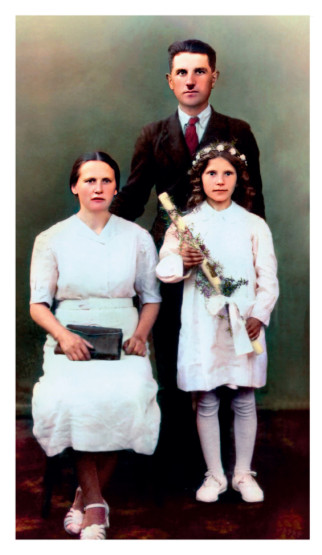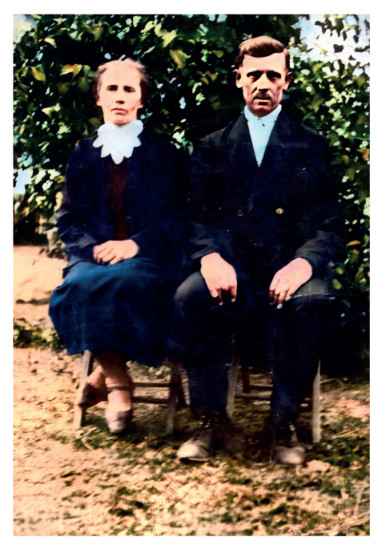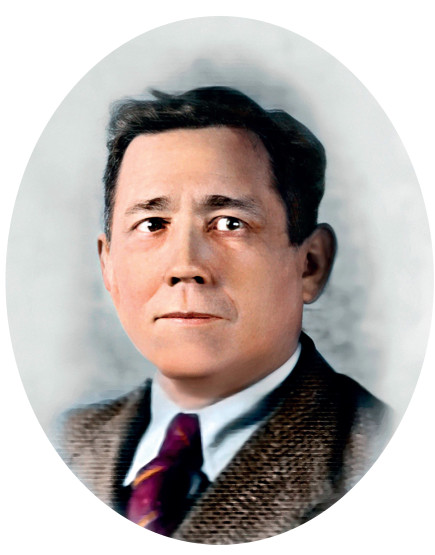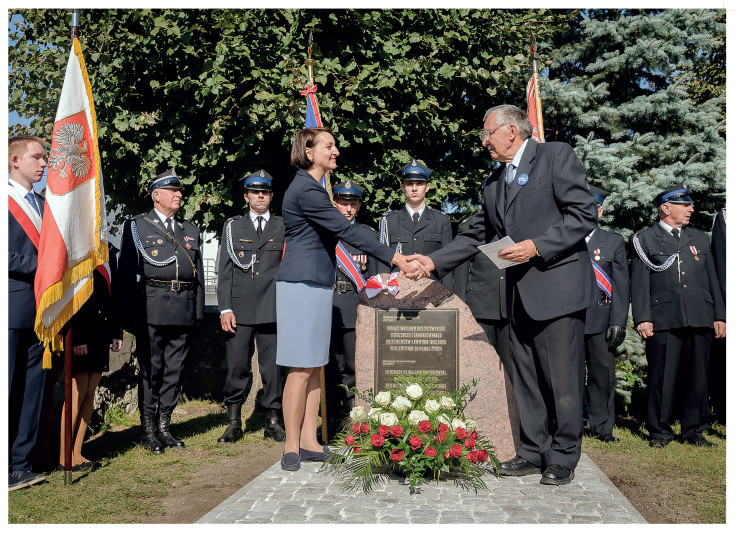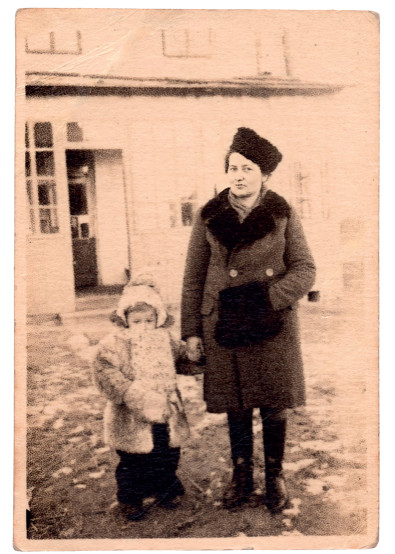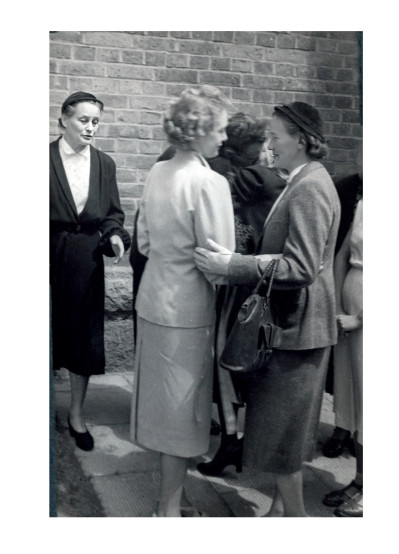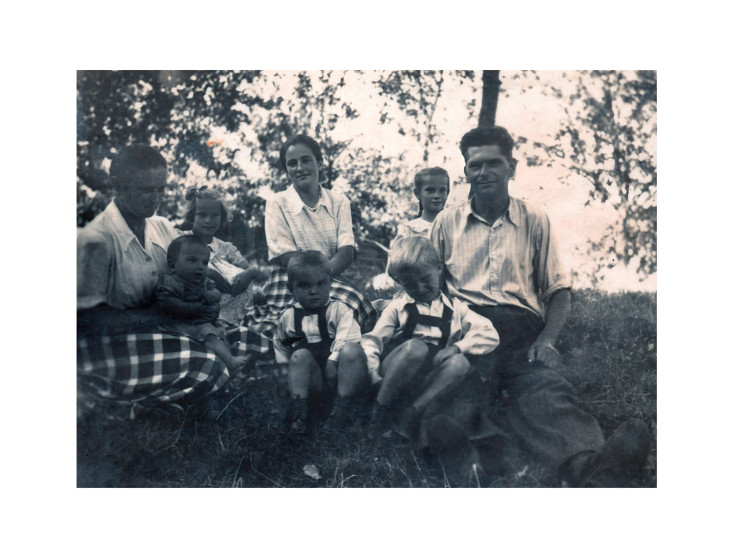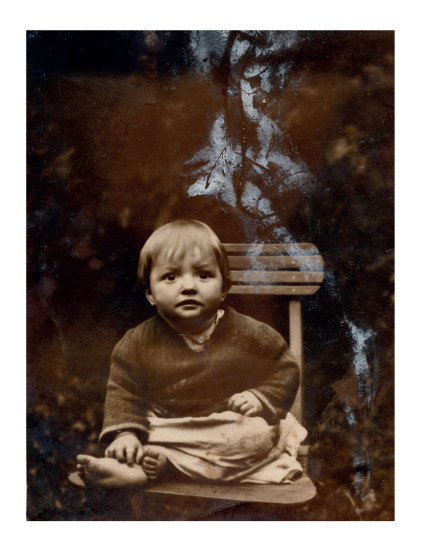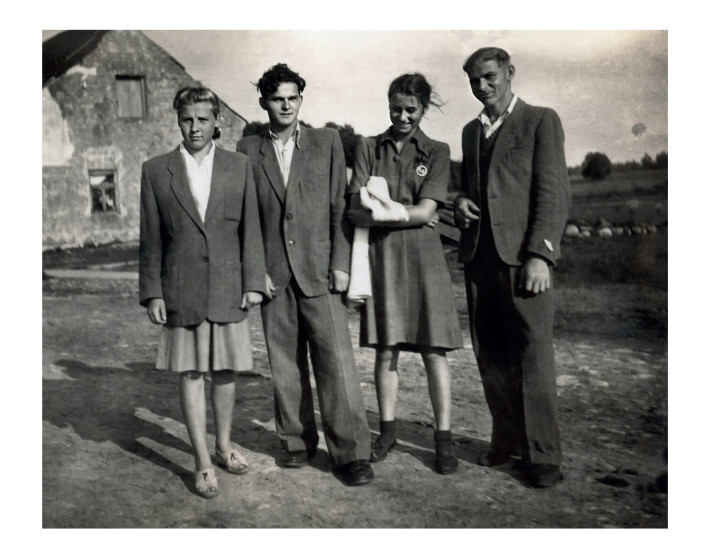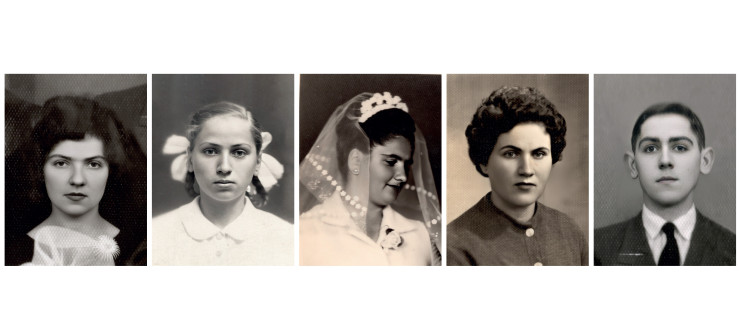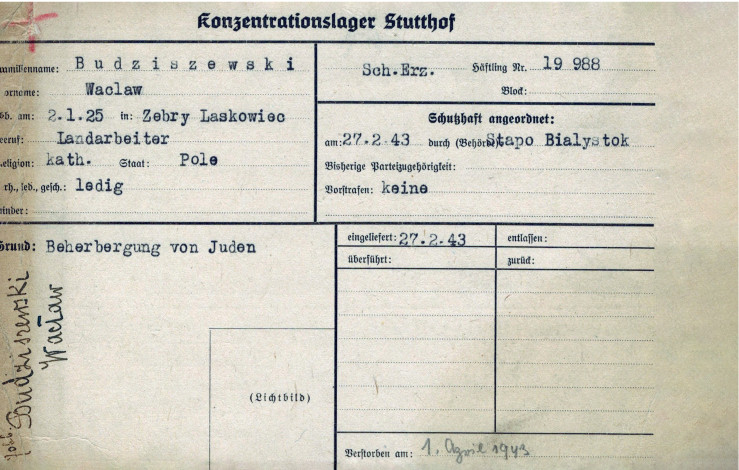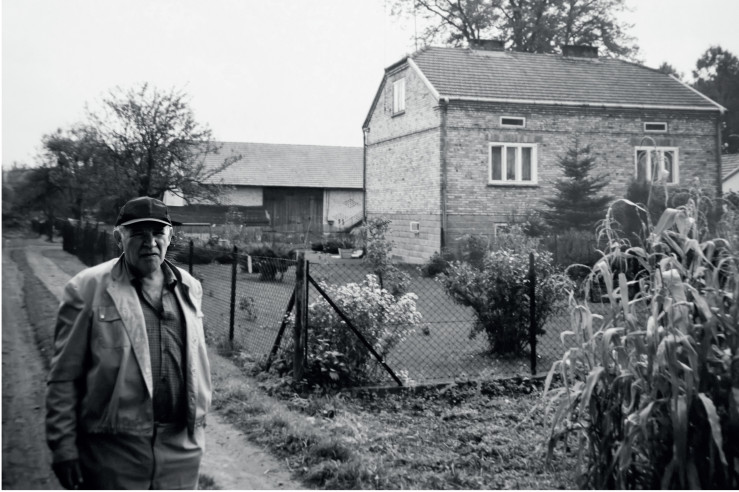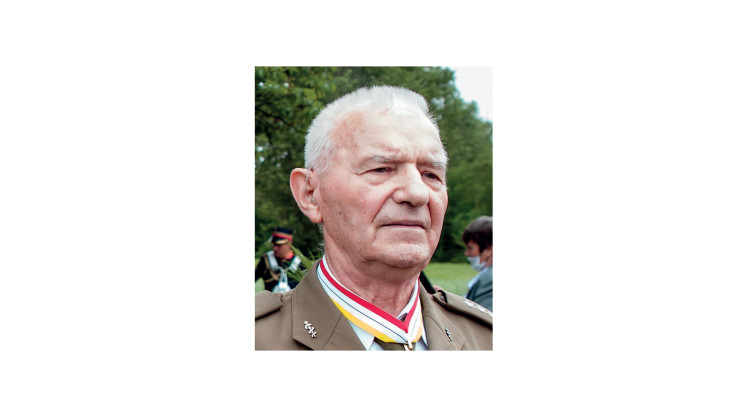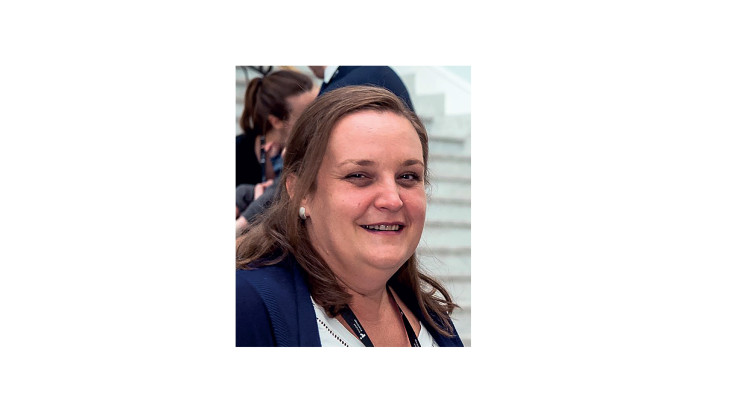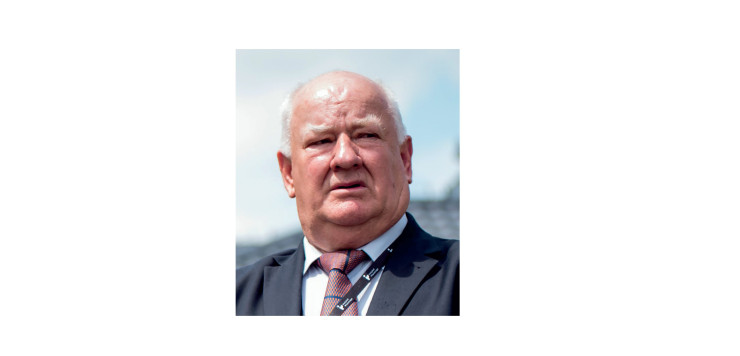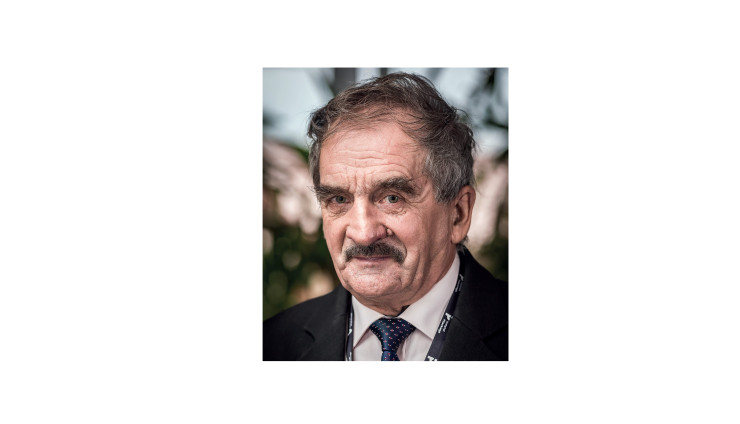Called by name | online exhibition - Instytut Pileckiego
Called by name | online exhibition
Who are “Called by Name”? They are Poles who were murdered by the Germans during the occupation because they helped Jews designated for extermination in the Holocaust – their friends, neighbors and complete strangers. For many years, the fate of those.
Thanks to the Pilecki Institute’s commemorative programme, members of “Called by Name” group has become a part of our collective memory.
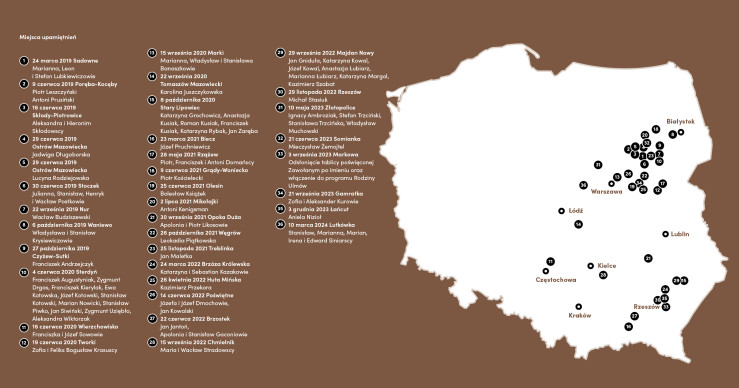
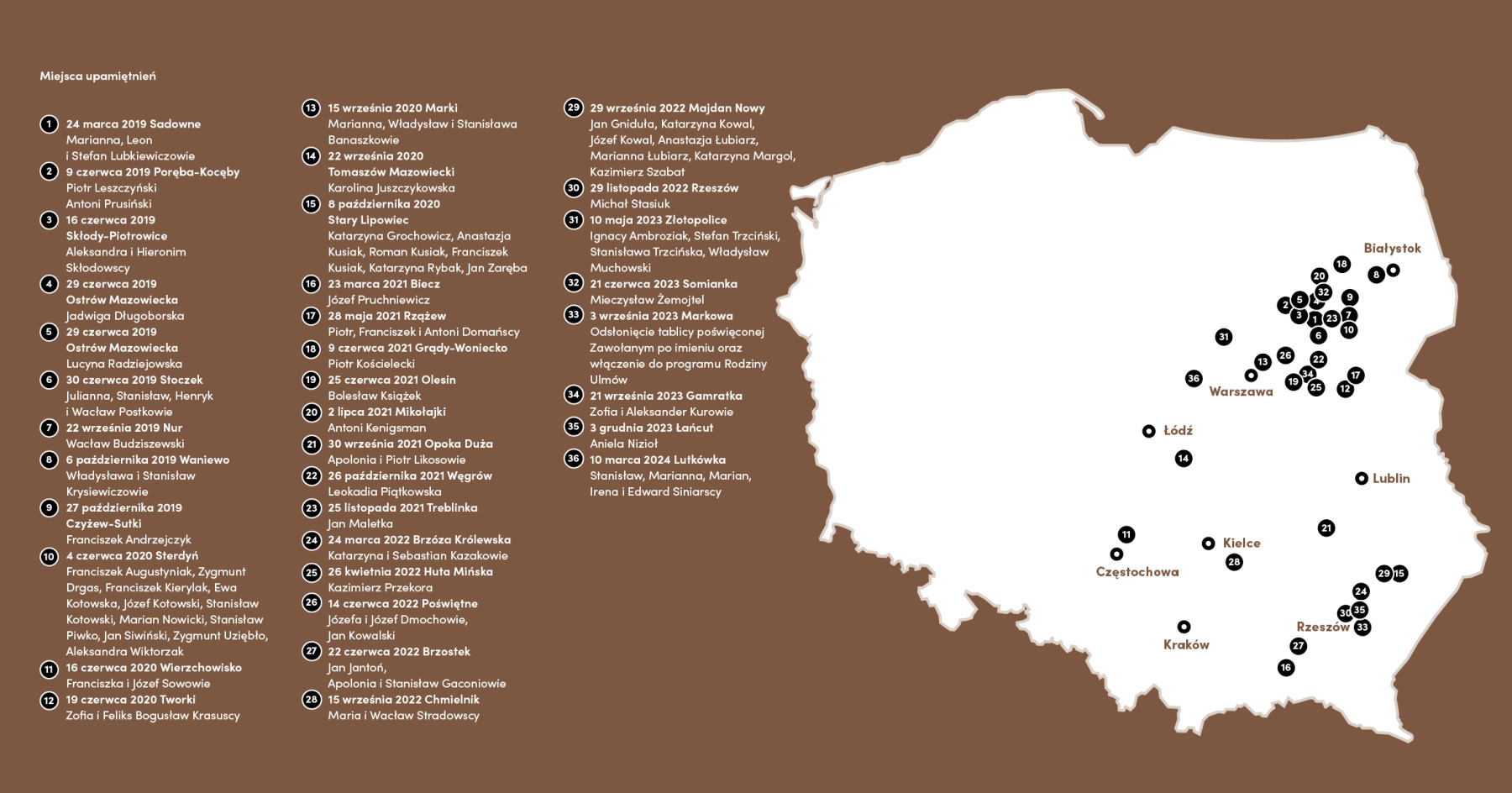
Death and oblivion
Some of those “Called by Name” supported Jews on a long-term basis, hiding them for many months, while others offered one-time assistance. The Germans punished all of them with death. They usually murdered the Jews first, and then those who had helped them. They often humiliated and tortured the victims in front of their loved ones before killing them. Next they plundered and destroyed their homes. The victims’ families sought shelter with relatives and neighbors or were taken for forced labor.
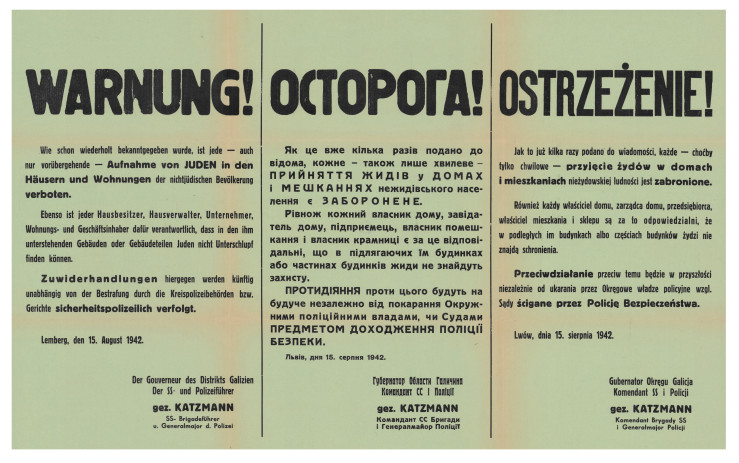
In many cases, the “Called by Name” died following denouncements – the occupation policy of terror and fear brought results. The Germans typically murdered them without trial or formal sentence, often denying them the right of burial. The fate of the victims went unknown for years.
So many people were saved! If they had survived, I would be with a [Yad Vashem] medal today. But because they didn't survive, we were left like that - forgotten.
~~ Eugeniusz Sowa, son of the murdered Franciszka and Józef Sowa.
The significance of sacrifice
The historical narrative usually ends with the death of the victims. However, the tragedy continued. The families of the “Called by Name” – people who experienced the death of their loved ones, the loss of home or the necessity to escape – carried this burden alone, dealing with trauma, misjudgment and indifference. This is also their story.
The “Called by Name” defied the cruel laws of German totalitarianism and paid the highest price. In an attempt to save the lives of others, they did not even save their own. But was their sacrifice in vain? Today we are discovering its significance, acknowledging the universal message of still relevant values: courage, sacrifice and solidarity with the persecuted.
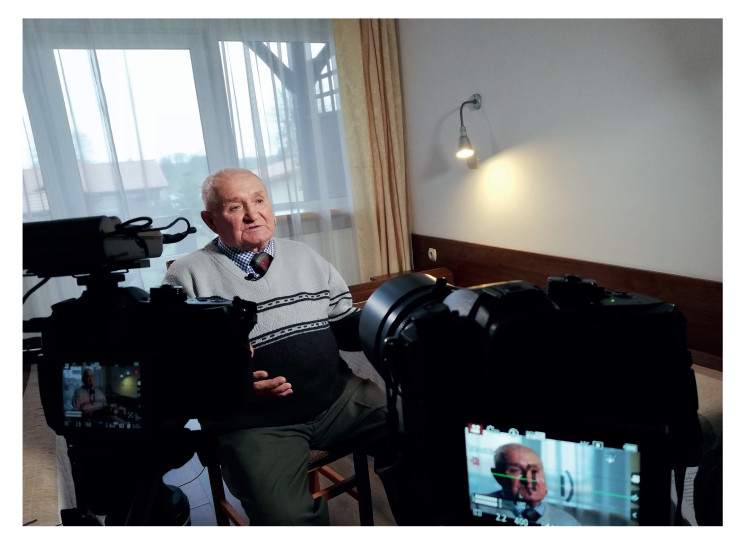
We were supported by Piotr Likos and his wife, who were friends of my father. All the time, Piotr Likos was risking his life and his family... selflessly helping every Jew in hiding.
~~ Bella Brener de Grosman, rescued by the murdered Apollonia and Piotr Likos.

A stone is just the beginning
The “Called by Name” program, which was launched by the Pilecki Institute in 2019, commemorates the hitherto forgotten victims.
We conduct archival and on-site research, gather documents, photographs and testimonies – all in order to establish the precise course of events. The stones with inscriptions, which we unveil in various towns and villages, bring back the memory of the murdered – both Jews and Poles – to the local communities to which they once belonged.
But the stone is only the beginning. The integration and activation of the families of the “Called by Name” helps them to face past experiences. Educational projects – aimed particularly at the younger generations – help the stories of the “Called by Name” to enter the memory of the local community, Poland, and the whole world.

GERMANS IN POLAND
Occupation and genocide
The German invasion of Poland on 1 September 1939 began World War II. Pursuant to the Hitler Stalin Pact, the Soviet Union began their attack on Poland from the east on 17 September 1939. The Polish state was ultimately unable to defend itself against the joint forces of two totalitarian regimes – the Nazi and the Communist – and ceased to exist.
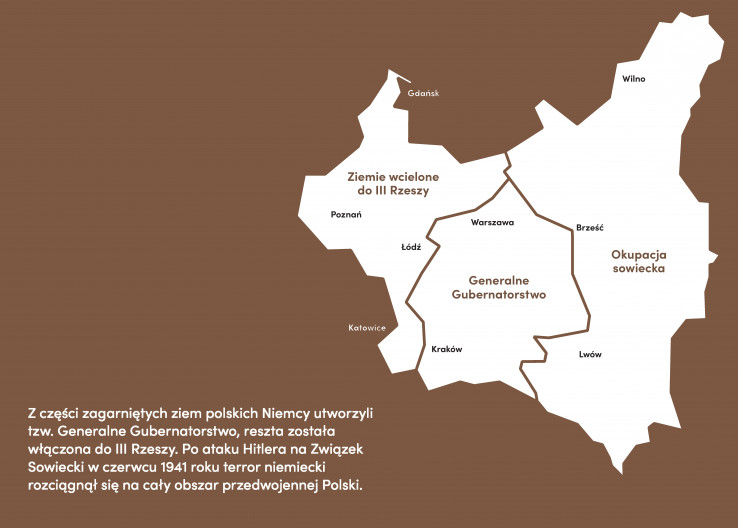
Terror sites
The German occupation of Poland meant mass terror brought against the civilian population. The Germans murdered around 100,000 members of the Polish intelligentsia, deported around one million Poles into territories annexed into the Third Reich, and rounded up nearly 3 million people for forced labor. Jews were locked up in ghettos, where they died from starvation and disease. In 1942, the Germans implemented their plan to exterminate all of Europe’s Jews in the extermination camps they established in occupied Poland. Nearly 3 million of the 6 million victims of the Holocaust were Polish citizens.
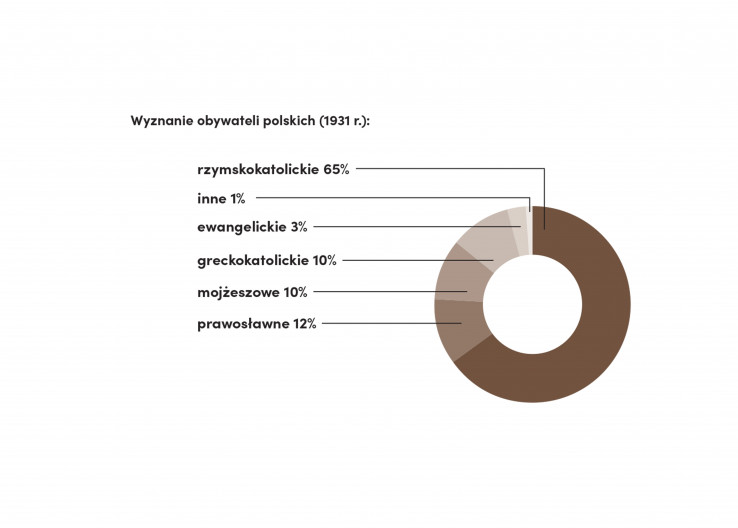
German policy in occupied Poland was genocidal in nature, intended to eradicate entire nationalities, religious and cultural groups whom the Germans denied the right to live.
Jews who leave their designated district without permission shall be put to death. This punishment shall also apply to those people who willingly shelter those Jews.
~~ Hans Frank, Governor General of the occupied Polish territories, 1941.
In the shared land
Pre-war Poland was home to many nationalities. All of its citizens were equal in the eyes of the law and enjoyed the same rights as citizens. The fact that Poles had lived for centuries in peace with the Jews only further condemned them with the Germans.
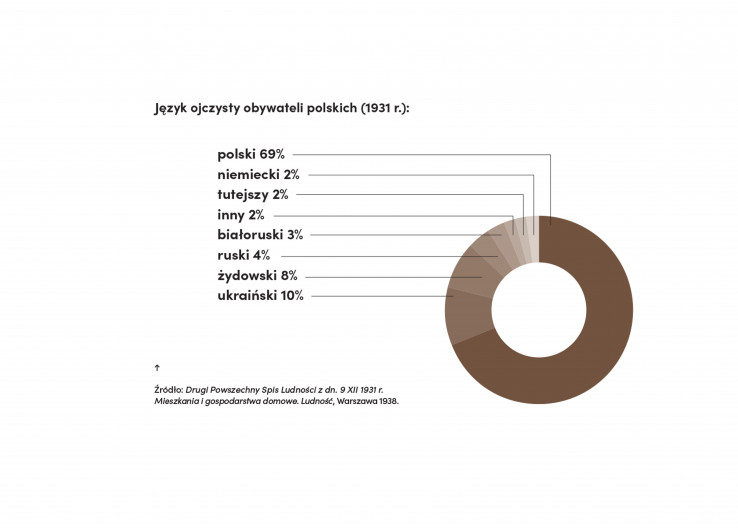
Less than enough
The discriminative nature of the food rations shows the racist attitudes of the Germans towards the so-called “non-Aryan” population of occupied Poland. For Poles, these amounts were only enough to cover 30% of their necessary daily food intake, for Jews, this barely amounted to 10%.
Germans ---> 2 613 kcal
Poles ---> 669 kcal
Jews ---> 253 kcal
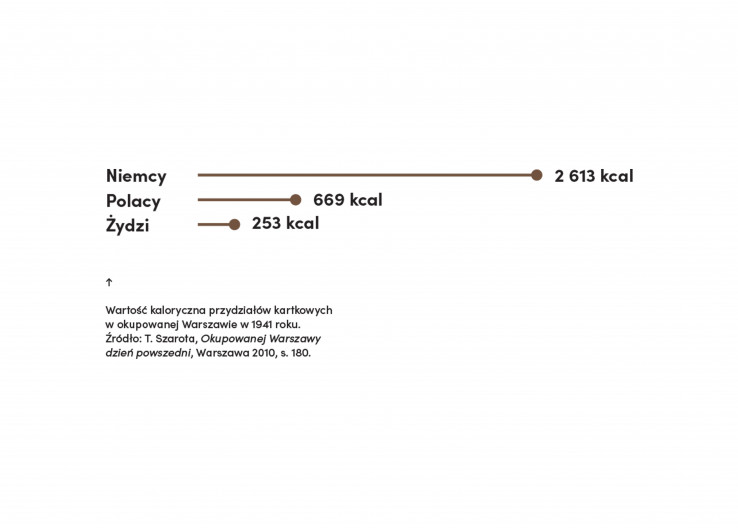
It is of no importance to me when you say that your people are starving to death. Let them die, so long as not a single German starves to death.
~~ Hermann Göring, 1942
Poles and Jews – victims of the Third Reich
More than 5.5 million citizens of the Second Polish Republic were killed during the German occupation. Nearly 3 million of 3.5 million Jews lost their lives in the Holocaust. Poles were also treated as “sub-humans”; the German terror affected almost every Polish family.
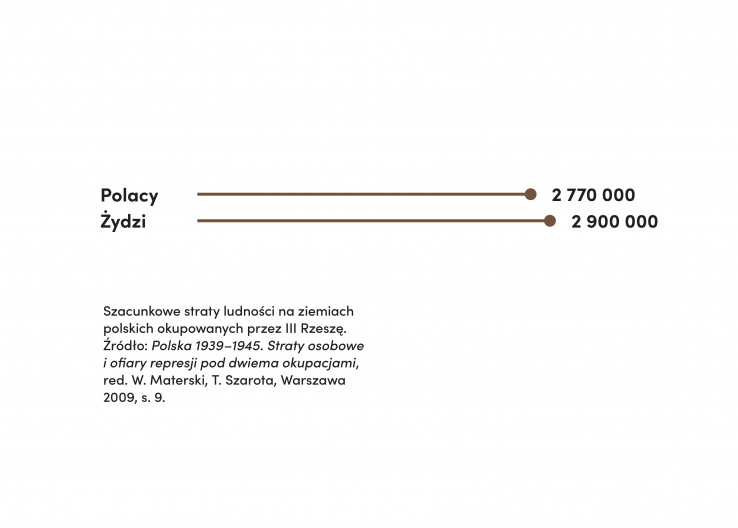
Slavs should work for us. Where we don't need them, they can die. [. . . ]. We are masters, we have priority.
~~ Martin Bormann, 1942
Lost generations
World War II was a demographic catastrophe for Poland. Pre-war forecasts had predicted Poland‘s population to surpass 38 mln people in 1946; after the war, barely 24 mln people still lived in the country the borders of which had been drastically altered.
31 August 1939 ---> 35.3 mln
1 January 1946 ---> 38.1 mln
(forecast from 1939)
1 January 1946* ---> 23.9 mln
*data from the Central Statistical Office of Poland
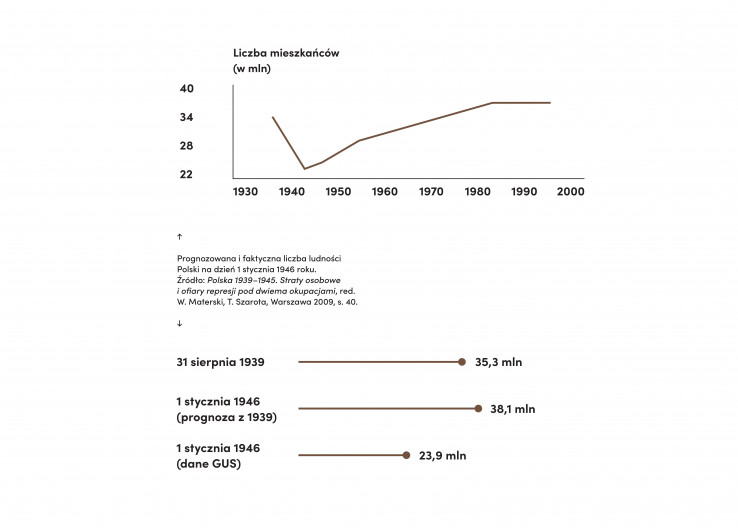
A world of inverted values
Germany’s occupational policies destroyed the solidarity which connected Poles and Jews. Special legislation introduced the death penalty for any Pole who aided the persecuted Jewish community. The Germans executed not only those individuals who sheltered Jews or gave tchem long-term help, but also those who showed simple gestures of humanity.

The people suspected of aiding Jews were not brought before a court and were denied a Chance to defend themselves. It also happened that the Germans murdered not only the rescuers, but also their entire families, other members of the household, and even neighbors. The destructive legislation, the encouragement to denounce fellow citizens and brutal oppression created an atmosphere of terror and held Poles hostage to the criminal policies of the Third Reich.
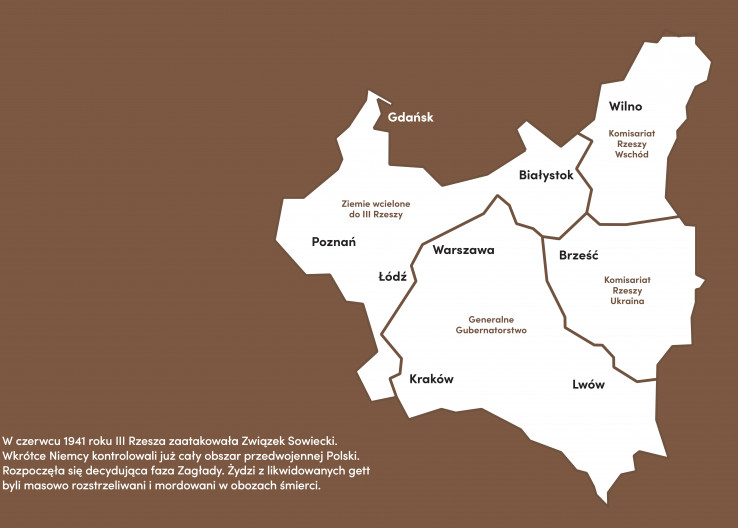
In spite of fear
Under such circumstances, solidarity was heroism. Both the Polish Underground State and individual Poles sought to aid the Jewish community by sheltering them, giving them material support or forged documents. Around 50,000 Jews survived the German occupation, among others thanks to the help of their Polish neighbors.
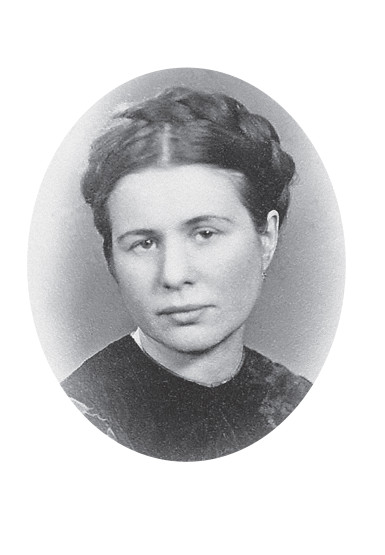
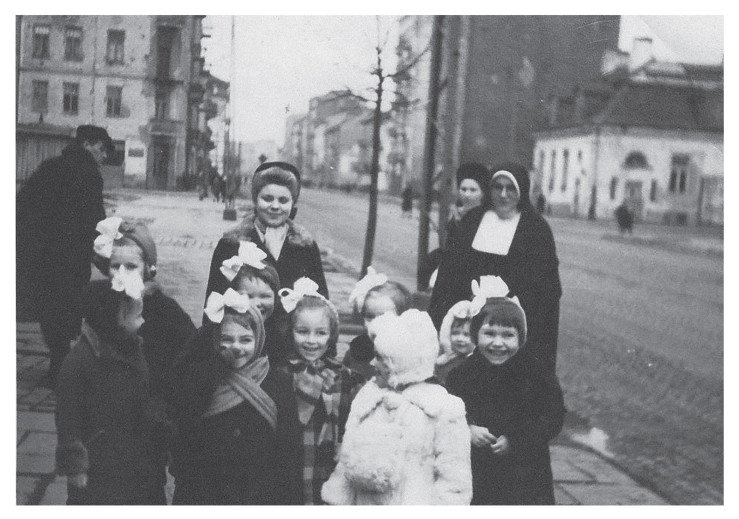
Discordant occupation
The Germans behaved differently in Poland, Ukraine and Belarus than they did elsewhere. Their attitude towards the ”racially related” Scandinavians and representatives of Western European peoples differed from their attitude towards the ”racially inferior” residents of Eastern Europe. This was reflected in the law punishing people who aided the Jews.
- BELGIUM
imprisonment,
financial penalty.
- FRANCE
three months’ imprisonment,
cases of individuals being placed in concentration camps.
- THE NETHERLANDS
imprisonment,
placement in a camp in their own country.
- GERMANY
preventive detention,
placement in a concentration camp.
- DENMARK
no legislation penalizing the lending of aid to Jews.
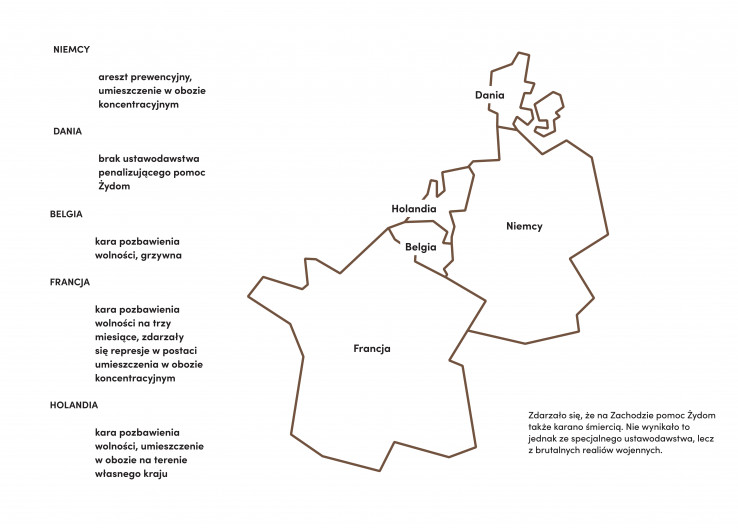
We are glad that the "Called by Name" program continues and develops, and our community is growing with more families from all over the country, until now forgotten and alone in their suffering. It is a great joy that the stories of our parents, grandparents and relatives - their bravery and solidarity with the persecuted - are gradually becoming part of the common memory of the Second World War. [. . . ] Let us "call by name" them, because the heroes deserve to be remembered!
~~ Open Letter of Families "Called by Name", 2nd Congress of Families in Warsaw, September 25, 2021.
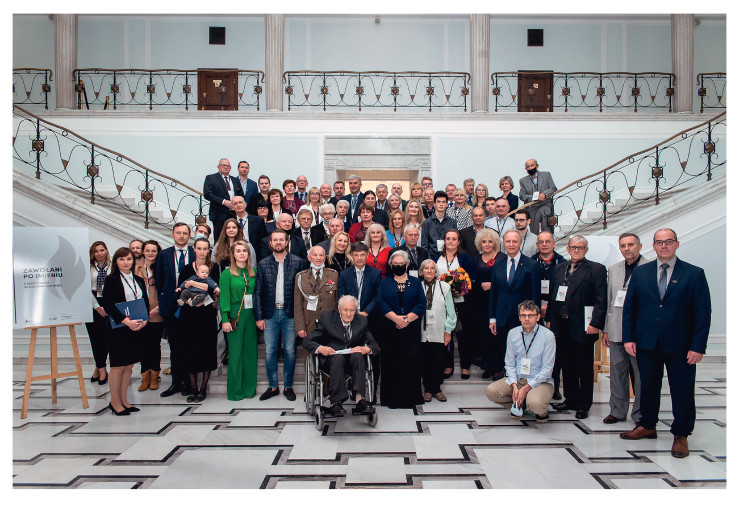
GOOD PEOPLE, GOOD ADDRESSES
Solidarity was a virtue
To all outward appearances, those “Called by Name” were regular people – farmers, workers, bakers, teachers. Most of them were aware of the punishment for helping Jews, but they did not let that stop them from giving food and shelter. The witnesses – their loved ones, friends and neighbors – more often speak of basic human decency than heroism.
The Germans showed them no mercy. They murdered not only the people who helped the Jews, but also their whole families. They burned down houses, destroyed possessions, forbade the burials of the dead. Fear of the German terror was supposed to quash all feelings of humanity.
The victims left behind parents, spouses and orphaned children. Their families were denied a home, means to live and education, and it was only with great difficulty that they rebuilt their lives in a post-war reality. Burdened with trauma, they revisited those painful memories reluctantly, without hope for support from the communist state and not always receiving compassion from others. But they never allowed the memory to die, and passed it down to the next generations.
What right have I to condemn them? Why should they have to risk their lives and the lives of their families for the sake of a Jewish boy they did not know? Would I have acted any differently? I knew the answer to that question. I "would not have lifted a single finger to help them". Everyone was just as afraid as everyone else.
~~ Roman Frister, a Polish-Israeli journalist and concentration camp prisoner.
LUTKÓWKA
Two Families
Stanisław and Marianna Siniarscy with their children Marian, Irena and Edward lived in the village of Lutkówka near Mszczonów. In February 1944, they gave schelter to Wolf and Chana Lipszyc, a young Jewish couple who were expecting a child. At the beginning of March, Chana gave birth to a son.
In the early morning of 10 March 1944, as a result of a report, officers of the German gendarmerie and Schupo from Żyrardów arrived to the Siniarski's farm. The military unit consisted of a dozen people. As a result of their actions, both Polish and Jewish families were murdered on the spot. The Germans did not spare even their children, including newborn son Wolf and Chana, who had just a few days.
After the war, exhumations of murdered families were carried out. In June 1945, Siniarski's bodies were transferred to the Lutkówka cemetery. At the end of the 1980s Chaim Lipszyc came to Poland, he was Wolf’s brother who managed to survive the German occupation. On his initiative, the remains of murdered Jews were exhumed to Warsaw's Jewish Cementery.
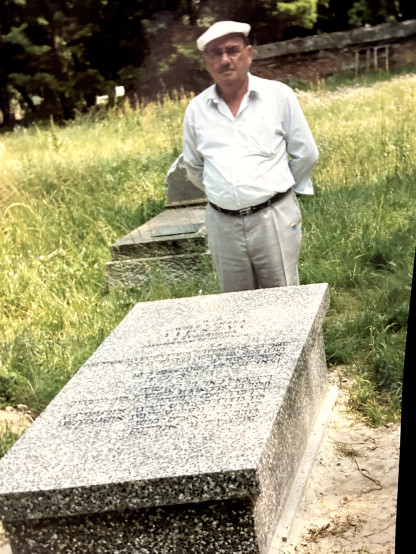
ŁAŃCUT
Without fear
In the last days of July 1942, the occupation authorities announced that the deportation of Jews in the district would begin on 1 August. Two days later, on 3 August, the Germans began deporting the Jewish inhabitants of the town and the surrounding area to the temporary camp in Pełkiny. From there they were to go to the extermination camp in Bełżec. Any assistance to the displaced, or even buying anything from them, was forbidden under penalty of death.
Many Jews tried to hide in order to survive the tragic events. This was also done by members of one of the oldest and most famous families of the Łańcut – the Wolkenfelds. They ran a restaurant in Łańcut and managed the Kupiecko-Rolniczy Bank.
The Wolkenfelds stayed in the attic and in the cellar of the Nizioł’s family house for several days. According to one witness, one day a random woman from the neighboring village entered the yard of the Nizioł’s family to sell eggs. She was supposed to spot Lieba Sara and tell Kraus, a German confidant, that there were Jews in the house on Kraszewski road.
After years, Michał Nizioł testified about what happened after the report: "My wife, now deceased Aniela Nizioł, informed me that there was a German gendarmerie squad and that among them was Kokot Józef and a confidant German Volksdojcz Krauze Feliks. The son and the woman, who were hiding in my house, were led out into the garden, and there they were shot by Rooster Joseph, [. . . ] while Wolkenfeld, the Jew, was running past his neighbor's house and there Krauze Felix caught up with him and led him to Rooster Joseph, who shot him."
According to Michał's testimony, a few days after the Wolkenfelds were murdered, the gendarmes sent a messanger for his wife. The woman ignored the official's call and was arrested by the gendarmerie the following day, on 23 August, and taken to the police station. In the evening she was shot also by Józef Kokot.
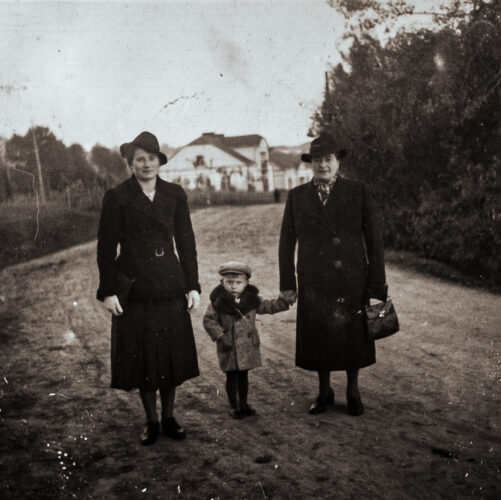
GAMRATKA
Backfilled Bottom
Among the Poles who risked their lives to help persecuted Jews were Zofia Kur and her son Aleksander Kur. They lived in the village of Gamratka, located in the vicinity of Mińsk Mazowiecki. During the German occupation, they hid in their farm three Jews: Berk Szafir, Lejzor Matuszewski and N. N., fugitives from the Mińsk ghetto. On 27 July 1943, as a result of a report, the German gendarmerie arrived at the Kur’s farm. The operation was led by Friedrich Gutberlet, known among the local inhabitants for his cruelty.
The Germans found Jews hiding in a cellar used to store potatoes. The gendarmes murdered them by throwing grenades inside. Then they ordered Alexander Kur to dig deeper the (buried after explosions) pit. As soon as he finished, he was shot inside. At the same time, Zofia Kur had to go with Gutberlet to the house. That's where the gendarmerie murdered her with a gunshot.
After the brutal murder of the Kur family and Jews in hiding, the Germans proceeded to loot inventory. After they had taken valuable things, they set the farm on fire.
The bodies of the murdered Jews were buried at the scene of the crime. The bodies of Zofia and Aleksander Kur were buried in the cemetery in Mińsk Mazowiecki.
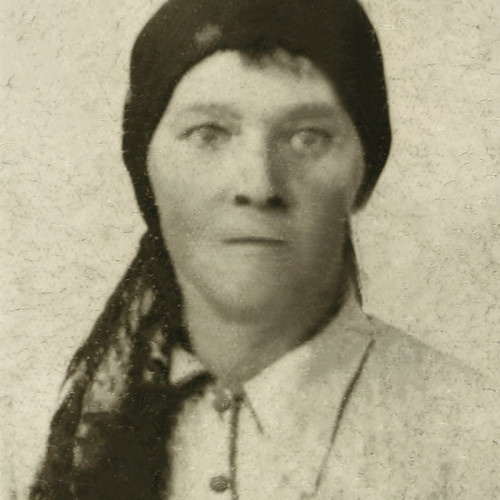
MAJDAN NOWY
The network of neighborly help
In November 1942, the Germans liquidated the ghettos in Biłgoraj, Tarnogród and Józefów. Those Jews who managed to escape, including the Feil family, sought shelter in the surrounding areas. They were aided by some residents of the village of Majdan Nowy, who hid the fugitives on their farms or gave them food.
On 29 December 1942, German gendarmes arrived in Majdan Nowy. With them was Ita Becher, a young Jewish woman who had previously been hiding in the village. The Germans tortured her into pointing out where she had been helped. Jan Kowal was not in the house at the time, so they shot his wife Katarzyna and their teenage son Józef. They also murdered Jan Gniduła and Katarzyna Margol, as well as Anastazja and Marianna Łubiarz and Franciszek Szabat. They also searched for other helpers – Mikołaj Lekan and Jan Łubiarz, but failed to capture them. Finally they plundered and partially burned the victims’ homes.
Since my husband did not return for the night, I went [. . . ] to Majdan Nowy. On the way we met my weeping husband, who told me that the Germans had shot my mother and brother Joseph “for the Jews”.
~~ Maria Róg née Kowal, daughter of murdered Katarzyna Kowal, sister of murdered Józef Kowal.
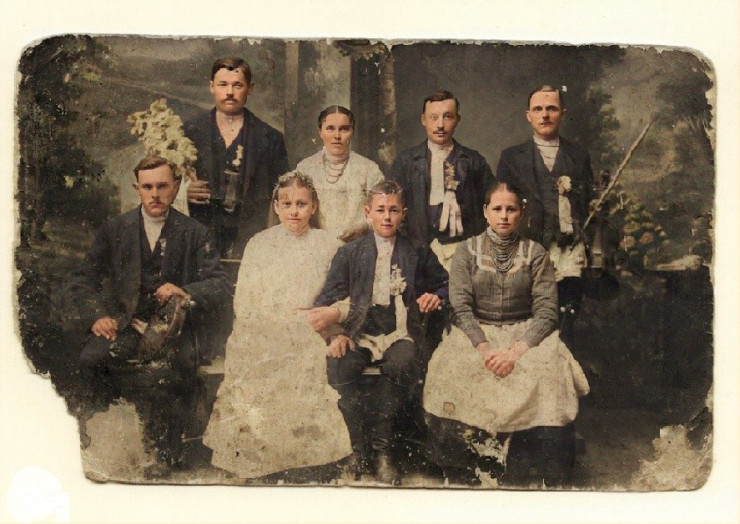
BRZOSTEK (Wola Brzostecka)
A common grave
In the late morning on 8 December 1942, residents of Wola Brzostecka heard an explosion and gunfire. The Germans had discovered the forest hideout of the Jewish Fisch family. Six months earlier, the Fisch family – Sara Hena, her children Ruchla, Fejga, Rojza and Mojżesz, and granddaughter Estera – had fled Brzostek and found shelter in the home of local farmers Jan and Bronisława Jantoń. Three months later, when the situation grew dangerous, the Fisch family moved into a dugout in the nearby forest. Jan and Bronisława continued to bring them food.
The Germans shot the Jews they found on the spot and murdered Jan Jantoń, who had just brought food to the hideout. Four children were made fatherless as a result.
The Germans ordered the bodies of the victims to be buried in the forest. To this day they remain there in a common grave.
POŚWIĘTNE (Helenów)
We’ll never see each other again
Józefa and Józef Dmoch lived in Helenów with their six children. Before the war they traded at the Stanisławów market and knew many local Jews. In summer 1943, they took in a group of about ten Jewish men whom they hid in the barn. Shortly afterwards, a German expedition arrived in Helenów. Upon noticing the gendarmes, the Dmoch children hid in the forest. The Jews also attempted to flee, but two of them were shot to death and two others were caught. The gendarmes arrested Józefa and Józef Dmoch, and on the way back they also captured deputy head of the village Jan Kowalski and his wife Ludwika. The Kowalskis were arrested on suspicion that they knew that the Dmochs were helping Jews and failed to inform the occupation authorities.
The Germans murdered the two Jewish arrestees at the gendarmerie station in Radzymin. Following interrogations, Ludwika Kowalska was released. Józefa and Józef Dmoch along with Jan Kowalski were executed on 15 July 1943.
Huta Mińska
In the fields behind the school
Kazimierz Przekora, a cavalryman and veteran of the 1939 defensive war, lived in the village of Huta Mińska. In summer 1943, three Jews asked him for shelter after having escaped from the labor camp in nearby Mińsk Mazowiecki. Przekora took them in and hid them in the basement beneath the kitchen.
On 2 July 1943, the Germans carried out a round-up in Huta Mińska and the neighboring villages. All of the men, including Przekora, were gathered at the school. In the meantime, the gendarmes searched his house, found the Jews, and shot them on site.
The head of Huta Mińska attempted to intervene on Przekora’s behalf, but was unable to help. The Germans took Przekora into the fields behind the school, where he was shot by Friedrich Gutberlet, the commander of the round-up operation who was renowned for his cruelty. Przekora was survived by his wife Władysława and two children – Wanda and Henryk, who died fighting on the front line in 1945.
At one point Gutberlet told Kazimierz Przekora: “Come and have a look at the Jews you were hiding.” He led him beyond the school premises and to a path cutting through the fields. Then I saw Gutberlet shoot at Kazimierz Przekora several times with a pistol.
~~ Józef Zychowicz, a witness of the murder of Kazimierz Przekora.
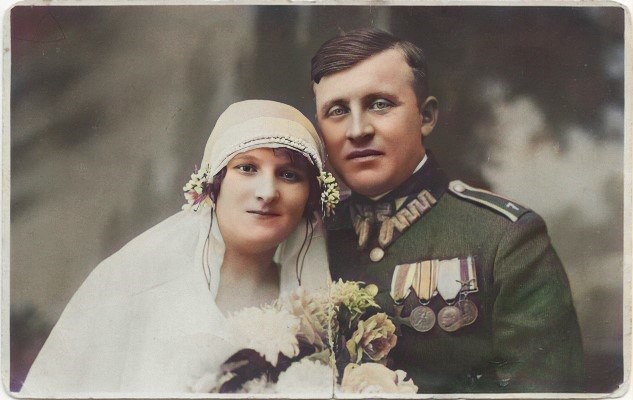
BRZÓZA KRÓLEWSKA
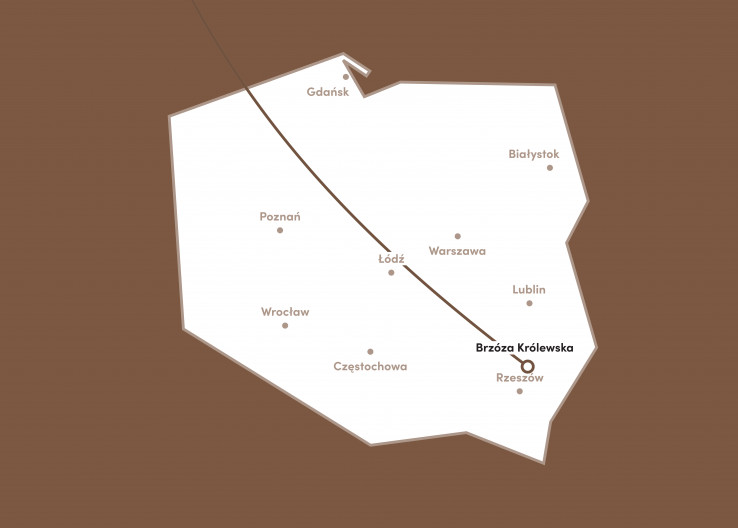
Alone in misery
Katarzyna and Sebastian Kazak lived in Brzóza Królewska near Leżajsk with their eight children. When the Germans began rounding up Jews for the extermination camp in Bełżec, the Kazaks came to their neighbors’ aid. First, they hid the children from the Wachs family. Next, in autumn 1942, they took in Chana Stiller. Two men joined her in December 1942; one of them is identified as Chyla Chym alias Eli Springer.
On the morning of 27 March 1943, German gendarmes and Blue Police officers surrounded the Kazaks’ property. They immediately shot the three Jews, and then murdered Katarzyna and Sebastian. Their daughters Agnieszka – who was out in the fields at the time – and Józefa – who managed to flee the house – evaded death, but they were forced to go into hiding. They returned to Brzóza Królewska in autumn 1945. For many years before the remains were moved from the courtyard to the mass grave in Wierzawice, Józefa cared for the burial place of the Jewish victims.
The Germans caused us such harm. My sister and I were left alone in the world in such misery […]. They took everything we had.
~~ Józefa Siuzdak née Kazak, daughter of the murdered Katarzyna and Sebastian Kazak.
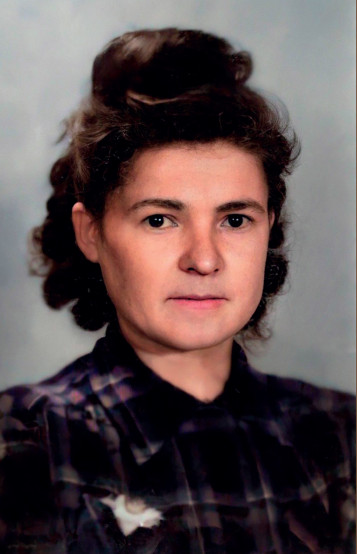
BIECZ

A poster for death
For sixteen months, the Germans patrolling the railway bridge in Biecz did not realize that Jews were hiding nearby. Józef and Maria Pruchniewicz organized a hiding place in the attic of their stable, which the Blum family – a married couple with two children, friends of the Pruchniewiczs – occupied from August 1942.
The risk was increasing, so in November 1943 the Blums moved to another location. Nevertheless, the Germans came for Józef Pruchniewicz in March 1944. They beat him in front of his wife and 10-year-old daughter Helena, and finally took him to the Gestapo post in Jasło. The family found out about his death from a German poster with a list of executed prisoners. Józef probably died during an execution in a forest near Jasło.
Three people from the Blum family survived the war. After moving to Israel, they kept in touch with Józef’s second daughter, Jadwiga Wędrychowicz.
He came out and said: I have an idea, if you want [...] there is straw for the cows upstairs and you can sit up there [...]. He brought something to eat and drink every night. We were alive…
~~ Szoszana Szeinman (previously Reizel Blum), who hid on the farm of the murdered Józef Pruchniewicz during the German occupation.
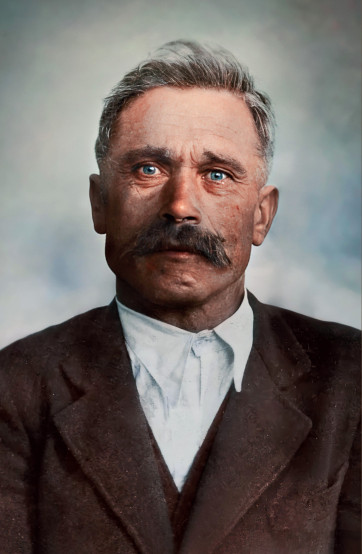
OSTRÓW MAZOWIECKA

Guest House
Only a few hundred meters separated the Jadwiga Długoborska's guest house in Ostrów Mazowiecka from the German gendarmerie and Gestapo prison in a house called Czerwoniak. Nevertheless, throughout the occupation Jews and officers of the Home Army found shelter there.
Shortly before the Germans withdrew, a servant fired from work at Długoborska for stealing, reported everything to the Gestapo. The Germans entered the guesthouse on the night of 23-24 June 1944 and arrested Jadwiga on charges of hiding Jews and collaborating with the Home Army. Her sister, Cecylia Pachecka, was also detained.
Thanks to the intrigue of her other sister, Wanda Uncle, Cecilia was freed. After several days of severe torture, Jadwiga was shot on 29 June 1944 in a suburban forest. The interrogations and execution were conducted personally by Gestapo officer Anton Birkenfeld ps. "Zyk", called the executioner of Ostrów. He was never punished for his crimes.
The last time I spoke to my sister [. . . ] was June 26, 1944, when I was handing her a parcel in the "Czerwoniak". On June 28th, I received message that she had been taken to the Gestapo for examination.
~~ Wanda Wujcik, sister of murdered Jadwiga Długoborska.

STERDYŃ
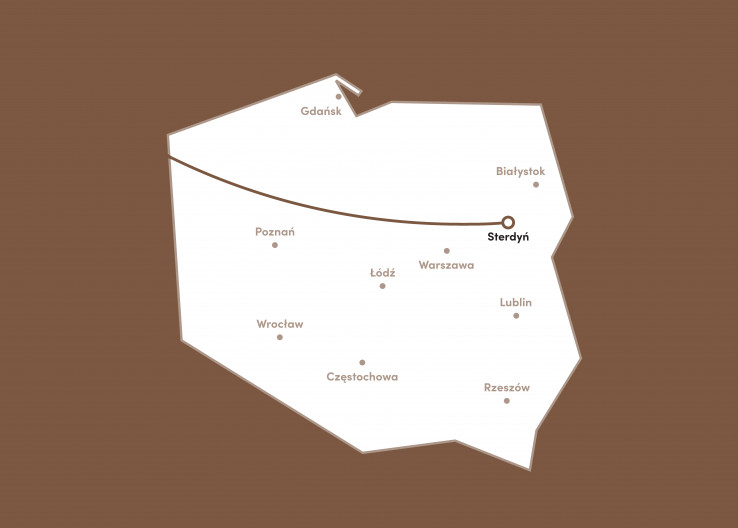
Raid in Paulinów
The Jews who escaped from the Sterdynia ghetto were hiding in the woods. They were helped by the inhabitants of two villages: Paulinów and Stary Ratyniec. They gave them food, clothes, straw to warm the shelters, temporary accommodation.
The Germans placed their agent among the Jews, who pretended to be a fugitive from Treblinka. It was he who later indicated to them from whom he had received help. First, they shot the guard of the farm, Franciszek Kierylak, who allowed the fugitives to spend the night in the court buildings. Another employee, Franciszek Augustyniak, as well as Jan Siwiński and Aleksandra Wiktorzak, were murdered next to the brickworks. Józef and Ewa Kotowscy died on the doorstep of their own home. Their son, Stanisław, who was delivering food to his colleagues before the war, was shot in the forest along with Stanisław Piwka, Zygmunt Drgas, Marian Nowicki and Zygmunt Uziebła.
The Germans did not beat him, but told him to dress quickly. Then they all went out with my husband. [. . . ] After a short time I heard four shots. [. . . ] I was three months pregnant at that time.
~~ Regina Augustyniak, wife of the murdered Franciszek Augustyniak.
During the raid on the night of 23 to 24 February 1943, the Germans murdered a total of eleven Poles.
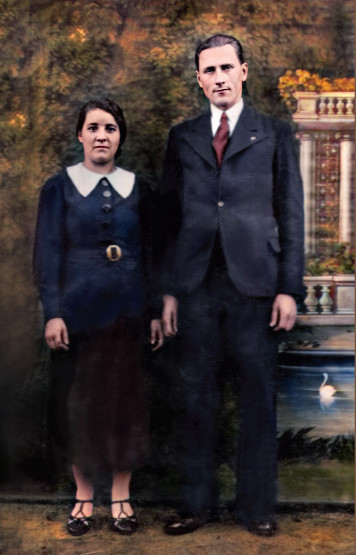
PORĘBA-KOCĘBY
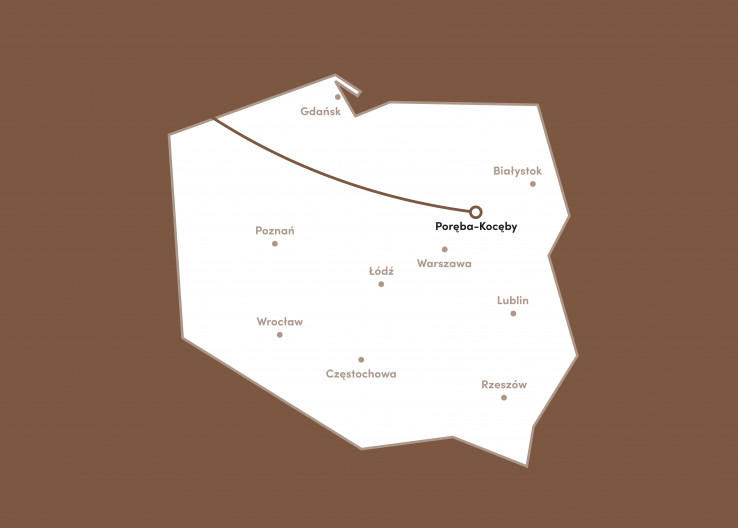
A cross on a pine tree
At dawn on 15 May 1943, the German gendarmerie and Gestapo set up a cordon around the village of Poręba-Kocęby and began a manhunt for Jews in the nearby forest. One was found hiding in a bunker several hundred meters from the farms belonging to two Polish families: the Leszczyńskis and the Prusińskis. The Poles had been carrying food to the Jew in hiding, and had sheltered him in a basement or a barn in winter.
The Germans lured Antoni Prusiński out of hiding by beating his wife and setting fire to his farm. They also arrested Piotr Leszczyński and the Jew who had been hiding in the bunker in the forest. All three men were taken deep into the forest, viciously beaten with sticks and then shot. Piotr and Antoni left behind a total of seven children.
In the morning my grandmother heard a shot from the direction of the road. That was the sign that the Germans were going to start searching. That is how it started.
~~ Hanna Mróz, granddaughter of the murdered Antoni Prusiński
The men were buried where they had been murdered. Józefa Prusińska, Antoni’s widow, carved a small cross into a nearby pine tree. It was only after the war that the victims’ remains were moved to the local cemetery.
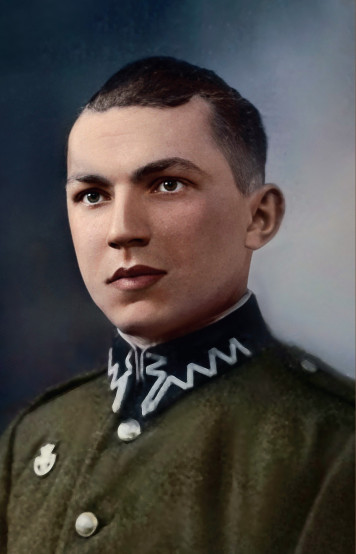
SADOWNE
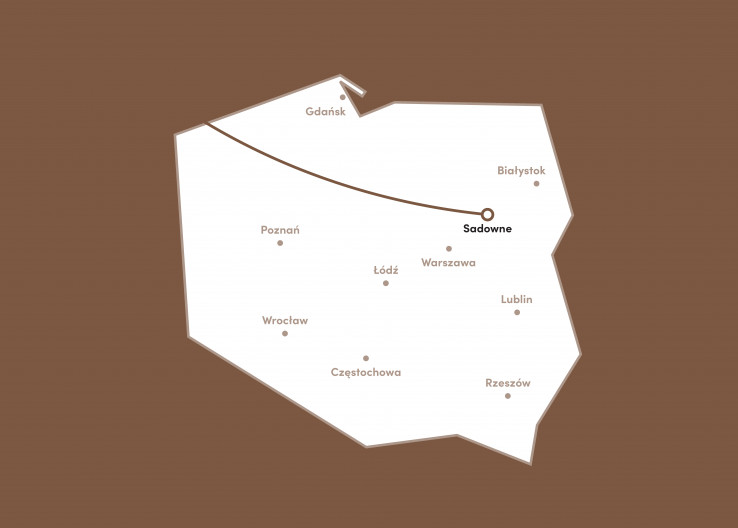
The bakery
During the German occupation, special authorization was required to bake bread. One of the bakeries in Sadowne was managed by the Lubkiewicz family. Despite the strict prohibition of the Germans, the bread that was baked there went to Jews hiding in the local forests.
Jews often came to me at night and I would sell bread to them; it also often happened that I gave bread to Jews for free.
~~ Stanisław Lubkiewicz, son of the murdered Leon Lubkiewicz, brother of the murdered Stefan Lubkiewicz
On 13 January 1943, the Germans arrested two Jewish women who were walking through the small town carrying a loaf of bread. They were forced to confess that they had received it from Marianna Lubkiewicz. The gendarmes murdered the two women on site, went to the Lubkiewicz house and accused them of helping Jews. After many hours of brutal interrogation, they shot both Marianna and Leon Lubkiewicz, as well as their son Stefan. The two remaining children, Stanisław and little Irena, survived. The Germans robbed the bodies of the victims of their jewelry and shoes and displayed the bodies in public to serve as warning for others.
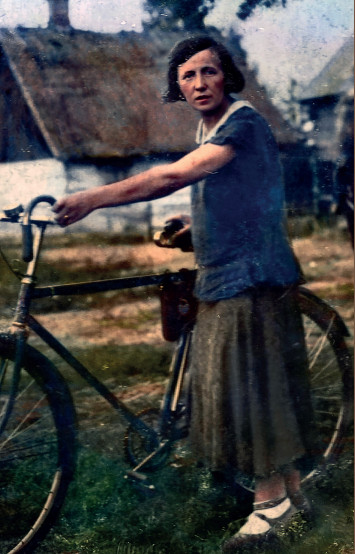
TOMASZÓW MAZOWIECKI
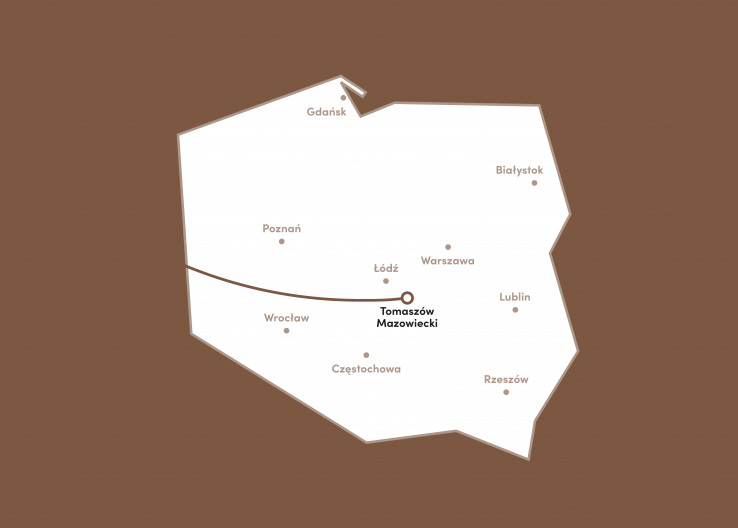
19 seconds
Karolina Juszczykowska lived alone in Tomaszów Mazowiecki and worked as a cook. During the German occupation, her modest salary was barely enough to survive. At the beginning of June 1944, two Jews asked her for shelter for a small fee. She agreed, even though she knew there was a risk of severe repression. For six weeks, the men lived with her in the same room.
On 23 July 1944, the German Schutzpolizei surrounded the building and searched it. The Germans shot the Jews hiding in the cellar on the spot. The German Special Court in Piotrków sentenced Karolina to death, and Governor-General Hans Frank refused to exercise her right of pardon. The sentence was executed on 9 January 1945 in Frankfurt am Main. According to the protocol, the execution "proceeded without incident and lasted 19 seconds".
On behalf of the German People [. . . ] the defendant is sentenced to death for hiding Jews. The defendant will pay the costs of process.
~~ From the sentence of the judgment in the case against Karolina Juszczykowska, issued by the Special Court at the German Court in Piotrków, 23 August 1944.

WANIEWO

Dispersion
Stanisław and Władysława Krysiewicz from Waniewo had five children aged three to nine. In the autumn of 1942, they took in eight Jews from the ghetto in nearby Sokoły. They prepared hideouts for them under the barn and provided them with food.
On the night of 7-8 September 1943, the farm was surrounded by German gendarmes. They dragged Stanisław out of the house, beat him unconscious, and then shot him. Then they set fire to the buildings and murdered the fleeing Jews. Władysława died three days later, after a series of brutal interrogations in the Tykocin prison.
The Germans gave Krysiewicz’s neighbours an ultimatum: they would either take care of their orphaned children or they would die also. The children went to different places – to relatives or orphanages. They learned about their siblings and their parents' history after many years.
After our parents death, we were raised by strangers.
~~ Teresa Grochowska, daughter of murdered Stanisław and Władysław Krysiewicz.
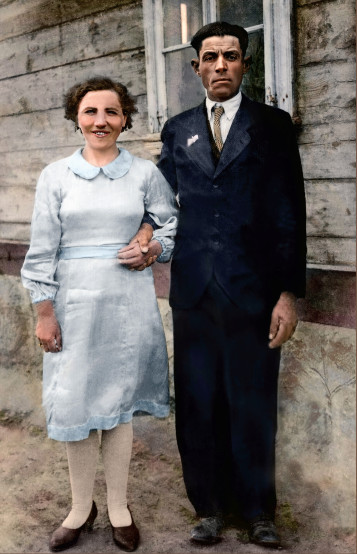
TWORKI
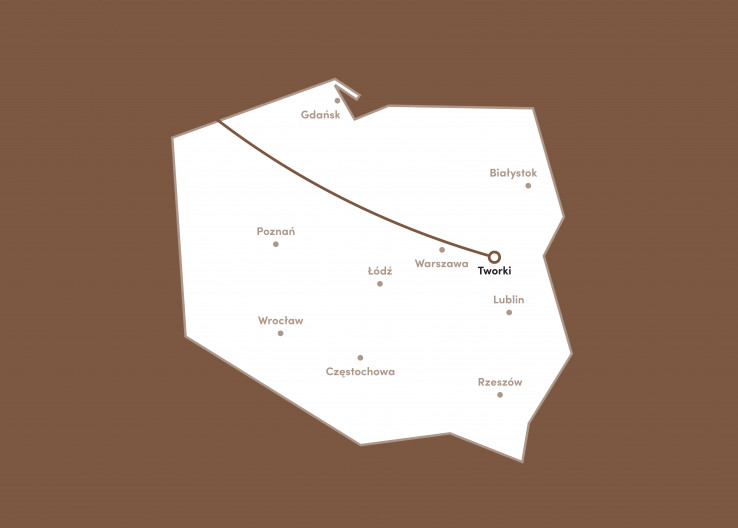
Mother and son
Their shoes betrayed them. If the boots had not stayed at the door to the potato cellar, the Germans would not have found the seven Jews who were hiding in Leon and Zofia Krasuski’s farm in Tworki near Siedlce. During a search on 13 February 1943, Leon took advantage of the moment of inattention of the gendarmes and fled under fire into the nearby forest. His wife and five-year-old son, Boguś, were taken outside the house by the Germans along with hiding Jews, and then all of them were shot. Zofia tried to cover her son with her own body – to no avail.
Leon had been hiding from the Germans in the woods for weeks. After the war, he sold the farm, remarried and started a new family. He never mentioned to his children the tragedy that befell him.
It was known that if the Germans found Jews in someone's home, they would murder them and those who hid them. That's why my uncle never told anyone he was hiding Jews.
~~ Wacław Krasuski, nephew of Leon Krasuski and cousin of the murdered Boguś Krasuski.
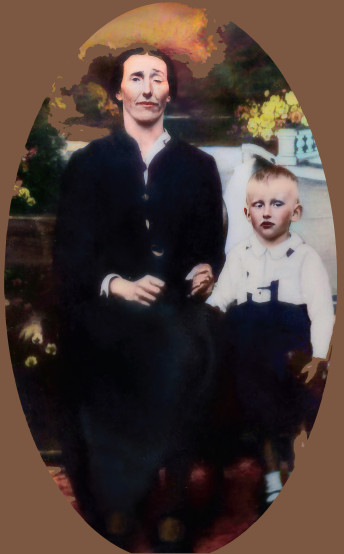
CZYŻEW-SUTKI

The basement and the dugout
The Jews of Czyżew knew Franciszek and Stanisława Andrzejczyk from before the war. When the Germans liquidated the ghetto in the autumn of 1942, several Jewish families totaling eighteen people fled and sought aid at the Andrzejczyk household in Czyżew-Sutki. The hosts were already taking care of their six children, but they did not hesitate to take in the refugees and give them food and a roof over their heads for several months.
The Germans were liquidating the Jewish ghetto in Czyżew and the Jews came to us and asked us to hide them. [...] My parents and we could not refuse.
~~ Eugenia Pakeła née Andrzejczyk, daughter of the murdered Franciszek Andrzejczyk
Good fortune abandoned the Andrzejczyks on 20 March 1943. On that day, German gendarmes from Czyżew surrounded the house and began a search. They found two hideouts – a dugout in the yard and a basement beneath the floor of the house. They shot three of the hiding Jews and Franciszek Andrzejczyk on site and transported the remaining Jews to Szulborze. When it was all done, the Germans returned and raided the house, taking anything they could find, including the livestock. Only a miracle saved Stanisława Andrzejczyk and her children from death.
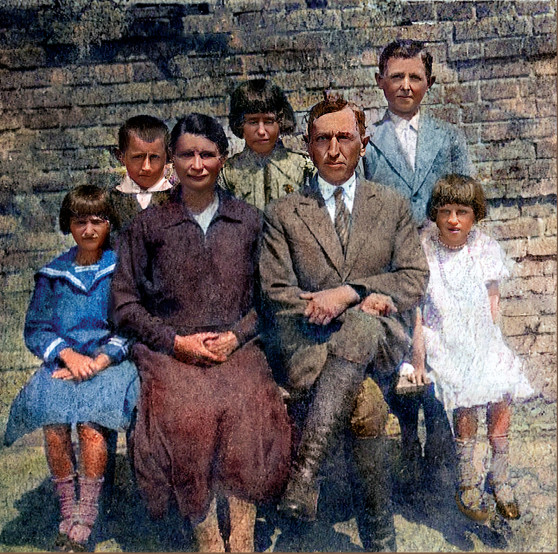
NUR (ŻEBRY-LASKOWIEC)
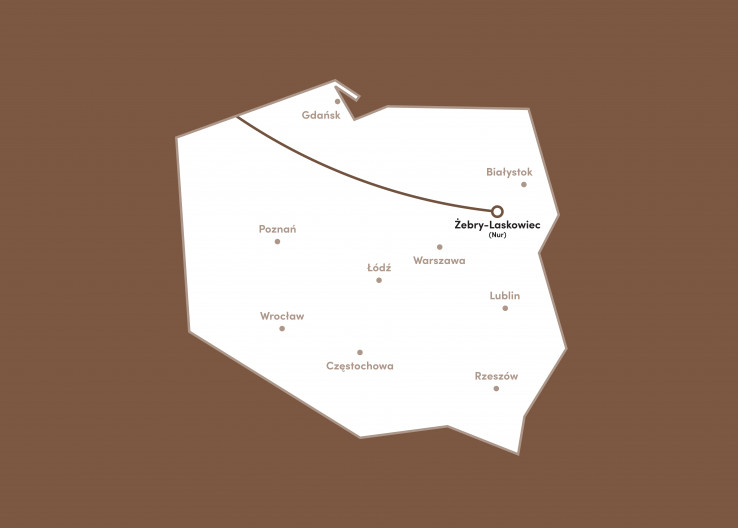
A life for a life
Located near a forest, at the edge of the village, Henryk and Stanisława Budziszewski’s farmhouse was not particularly remarkable. It was there, at the end of 1942, that a Jewish merchant couple named Lustik and their three daughters from Nur on the Bug river found shelter. The Budziszewskis hid them in their own barn.
My parents felt that they were responsible for his death. [...] It was difficult to carry on living after all that; their life was very difficult.
~~ Konstanty Budziszewski, brother of the murdered Wacław Budziszewski
At the second half of February 1943, the Germans intruded onto the farm and found the hiding place. The found Jews were killed on site. The threat of death hung over the whole Budziszewski family. Wacław, the eldest son, declared that it was he who had hidden the Jews without his parents’ knowledge. He was arrested and transported to the KL Stutthof concentration camp, where he died a month later. The rest of the family, including the several-month-old Konstanty, was sent to East Prussia for forced labor. They survived thanks only to the sacrifice of a son and a brother.
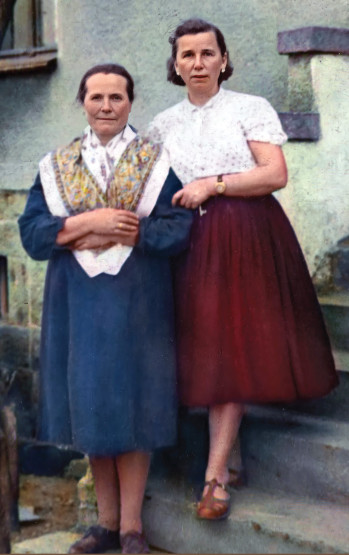
MARKI (PUSTELNIK)

Nothing left behind
Among them were escapees from the Warsaw Ghetto, Rubin and Perla Feldszuh with their daughter Josima. In autumn 1943, Marianna was warned that the Germans were planning to search her home, and so the Jews hiding there were forced to leave that very night.
That small village, that tiny village, recalls a settlement in the Land of Israel. [...] We carefully approached a little house with a fence. A thin, wan, sickly old woman opened the door for us, [then there was] the entrance hall, then the kitchen.
~~ From the diary of Rubin Feldszuh, who hid with his family at the Banaszek house
When the German gendarmes entered the house, they found nothing more than an empty hiding space beneath a cupboard. Marianna was not at home, so the Germans took Marianna’s children, Stanisława and Władysław, who were present at the time, transported them to Marki and shot them near a local brickyard. Then they waited for the woman. When Marianna came home from church, Germans killed her. Wiktoria, the last of the Banaszek children, fled when she discovered her mother’s body at home. Her later fate remains unknown. No photographs of this family: neither of Marianna nor of her children were ever recovered.
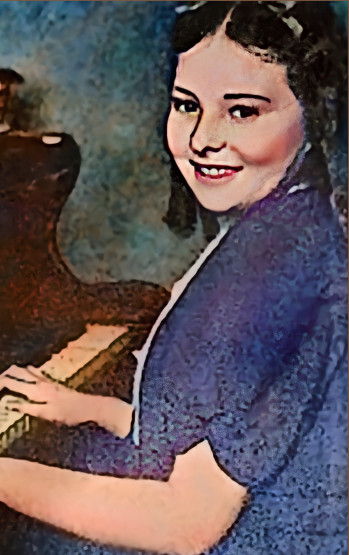
TRAUMA OF GENERATIONS
Life after the disaster
The sudden, tragic death of the “Called by Name” cast a shadow on the history of their families. For years, it traumatized the lives of their loved ones – not only the witnesses themselves, but also the second, third and subsequent generations.
Orphaned children were sent to close or distant relatives and even to orphanages. They were seldom able to count on a good education, more often they struggled with poverty. It happened that they learned the history of the family only after years. Parents and siblings sometimes faced a sense of guilt over the death of their loved ones. In communist Poland, the sacrifice of the “Called by Name” was neither spoken nor remembered.
However, the families did not give in to despair and managed their lives in a war-torn country. They sought a dignified burial of the victims and appealed to various institutions in Poland and Israel for their commemoration. They waited for decades for the results of these efforts and lived with a sense of great loss. The attitude of their loved ones has remained a moral guide for them to this day.
Exhibition „Called by name”
Initiator of the program „Called by name”: Professor Magdalena Gawin, director of Pilecki Institute
Scenario: Bartosz Gralicki, Anna Miszczyk, dr Joanna Nikel, Tomasz Słomski, Tomasz Stefanek
Coordinator: Katarzyna Grabowska
Photographic documentary: Paulina Wiśniewska
Errata: Joanna Adamczyk, Marta Wilińska, Krzysztof Oleksiak
Project: Łukasz Walendziuk
Photographs from the private archives of the “Called by Name” families and from the collections of the Pilecki Institute were used in the exhibition.
Explore the stories of those who acted with kindness and decided to help others: Visit the exhibition at “Dom Bez Kantów” at Krakowskie Przedmieście Street 11 in Warsaw.
Tuesday - Sunday from 10 a.m. till 6 p.m. (Last entry at 5.30 p.m.). Thursday: 10 am - 8 pm.
Workshops: Tuesday - Friday 10:00 - 16:00 (Workshops after reservation)
Reservations: +48 539 093 336, zapisy@instytutpileckiego.pl
Registration form - click here
Free entry ! ! !
See also
- Passports for life. Website devoted to the activities of the Ładoś Group
Virtual exhibition
Passports for life. Website devoted to the activities of the Ładoś Group
During the Second World War, Polish diplomats in the Swiss capital of Bern cooperated with the Jewish community to carry out the so-called passport campaign aimed at saving Jews from the Holocaust.
- Lemkin. Witness to the Age of Genocide | online exhibition
Virtual exhibition
Lemkin. Witness to the Age of Genocide | online exhibition
Is genocide a domain of history? What led to one of the most significant intellectual responses to the tragic experience of World War II? Explore the story of Raphael Lemkin – the author of the concept of genocide!
- Liberated Twice. The political rights of women 1918 | online exhibition
Virtual exhibition
Liberated Twice. The political rights of women 1918 | online exhibition
The Decree issued by the Chief of State on 28 November 1918, which granted women the right to vote and the right to stand for election, placed Poland amongst the most democratic and progressive European states.
